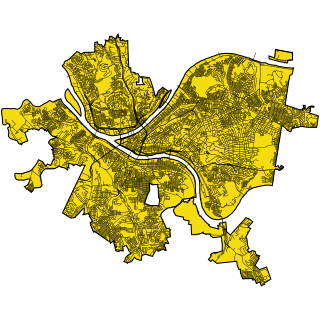Source:Love-christening/content
The First of Two Articles
In a small top-floor office of the City-County Bldg., surrounded by maps and charts, sits Pittsburgh's official Thinker Up of Street Names.
He is Samuel M. Lippincott, an assistant engineer for the City Planning Commission. Naming streets is not his principal duty, by any means, but at times when there are a number of streets to be named it's a real chore.
On such occasions Mr. Lippincott has sought inspiration in seed and mail order catalogs, current magazines, and other collections of words.
The task is made difficult by the fact that Pittsburgh has 5888 named streets—reputedly more than any other city in the world. It has so many because it's cut up by hills and valleys and streams. More than 2000 streets in the city are less than 500 feet long.
Short Streets, Short Names
Anyway, most of the logical names long since have been used, and, when a new subdivision is opened or a suburb is annexed, Mr. Lippincott really has to burn the midnight oil.
A street name can't be just any word. It must have a nice sound and be fairly easy to pronounce. Wherever possible, Mr. Lippincott likes to choose a name descriptive of the street's location, such as something ending in "view" for a high street.
Short streets should have short names, Mr. Lippincott has found. Otherwise the lettering of maps is difficult.
Although a few streets have been named for prominent persons, the practice has been avoided in recent years. Controversies are too likely to develop.
"Once in a while when we're stuck we look up the names of property owners on a street, pick one, and hope he's of good character," Mr. Lippincott said.
When a suburb is annexed, streets that have the same names as streets in the city must be renamed. But if the suburban street is an important one, and the street in the city not so important, the latter is changed.
Sometimes there are complications. When Carrick was annexed, it was thought that Spencer Ave. would have to be changed because the name had been used for many years for a street in the 13th Ward. It was almost historic. But, on the other hand, a church was named for the Carrick street. So eventually the street in the city had its name changed, to Apple St.
Residents Complain
Once in a while persons living on a street complain about the name given it. Residents of Hicks St. declared that people would think they were backwoods characters. They succeeded in getting the name of their street changed to Halifax, but they didn't like that either. Wags were always telling them to "go to Halifax."
A citizen objected to Tropical Ave. because it isn't tropical in Beechview, and another said the name of his street was a swear word in German.
Residents of Berlin Way and Tokyo St. recently raised understandable objections to the names of their streets, which were changed to Moran Way and Tokay St.
'Arithmetic' Used
As in the latter change, the names of some streets can be altered just enough to make them new names, yet still have a familiar sound. Sometimes it's done by addition. When Carrick was annexed, Cherry St. became Cherry Hill St., and Poplar became Poplar Grove.
Sometimes subtraction does the trick. Princeton St. in East Liberty became Prince St.
Mr. Lippincott is attempting to hold down the number of street names in several ways. Where he has occasion to rename two streets which terminate opposite each other on a main thoroughfare, he makes them Blank St. East and Blank St. West, or Doe St. North and Doe St. South.
Where a small street runs off a main thoroughfare it is named for the street, with Place or Court or something of that sort behind it. Wellesley Ave. and Wellesley Rd. constitute an example.
Fads in Names
Incidentally, Mr. Lippincott says there are fads in street titles. For a time everyone will want to live on a Place, then they will prefer a Terrace, and possibly next a Road will be the fanciest place of residence. At the moment, Drives seem to be the favorite.
Generally, if a thoroughfare is less than 40 feet in width it is called a street; if more than 40 feet an avenue. There are many exceptions, however. Sometimes street or avenue doesn't sound just right with the name of the thoroughfare, so the other designation is used despite the width of the pavement.
Officially, there are no alleys in Pittsburgh. The City Council decided some years ago that no one should live on an alley, so it abolished them by ruling that thereafter they should be called Ways.
Many 'Ways'
In the competition for names, many of the Ways have had to take what was left by the larger streets. Their names include Back Way, Front Way, Best Way, Drain Way, Drive Way, Endo Way, Gaza Way, Mid Way, My Way, Nesta Way, Our Way, Rear Way, Roll Way, Side Way and Water Way.
Most of the Ways have more orthodox names, and Mr. Lippincott points out that they could be transferred to streets if the city ever actually ran out of suitable street names.
Council Has Final Say
Mr. Lippincott is not the only person who can name a street. Developers of new subdivisions can name their own streets, subject to official approval. City Council must approve all new names and name changes, and occasionally originates a name itself.
But the law provides that the City Planning Commission must review all new names, and the way the thing works out, Mr. Lippincott, as the Commission's designated name expert, originates most of them.
Most of the streets already were named, of course, when he took up the work in the early 1920's. Through these earlier names much of the history of Pittsburgh can be traced. A little tracing will be done in this space tomorrow.
